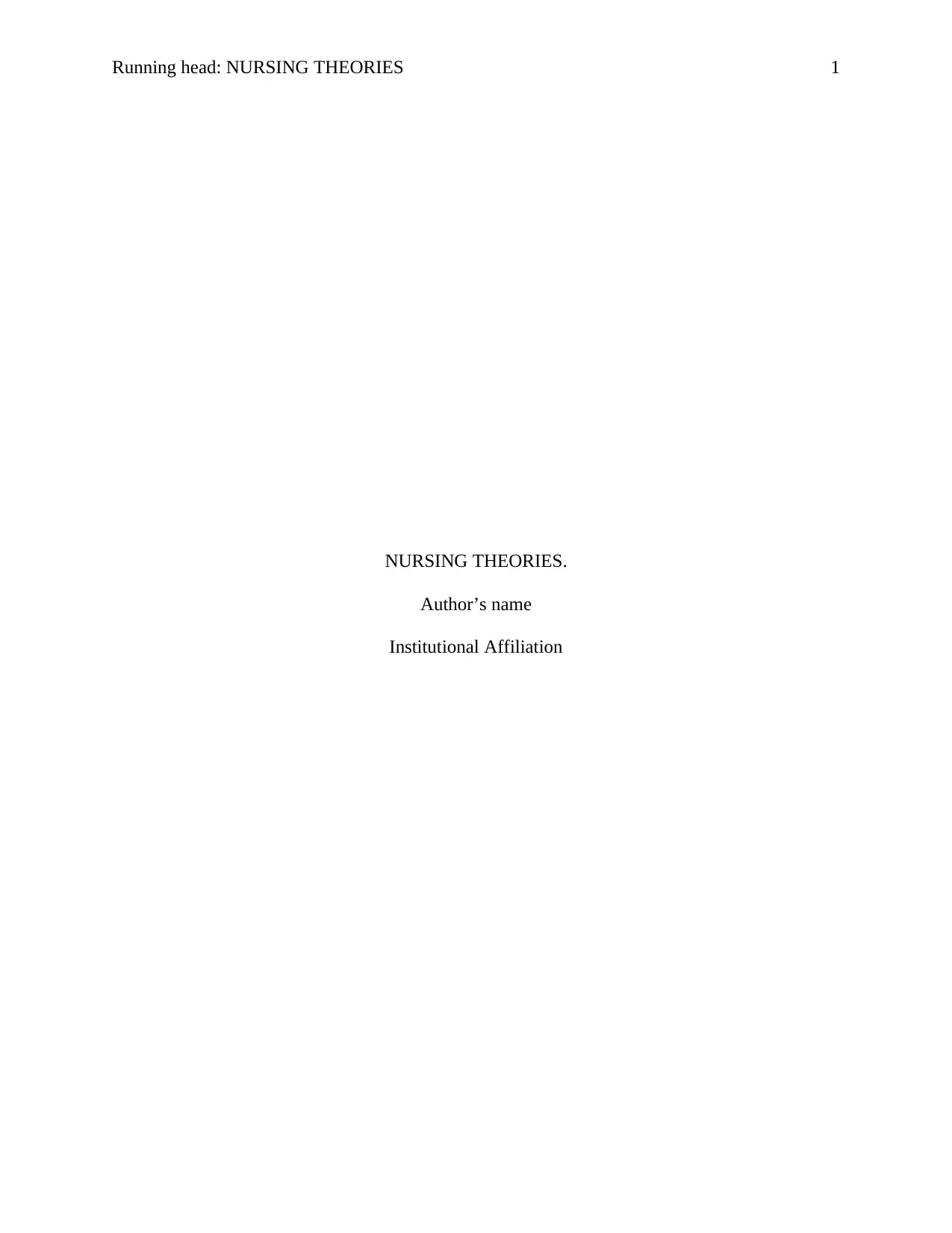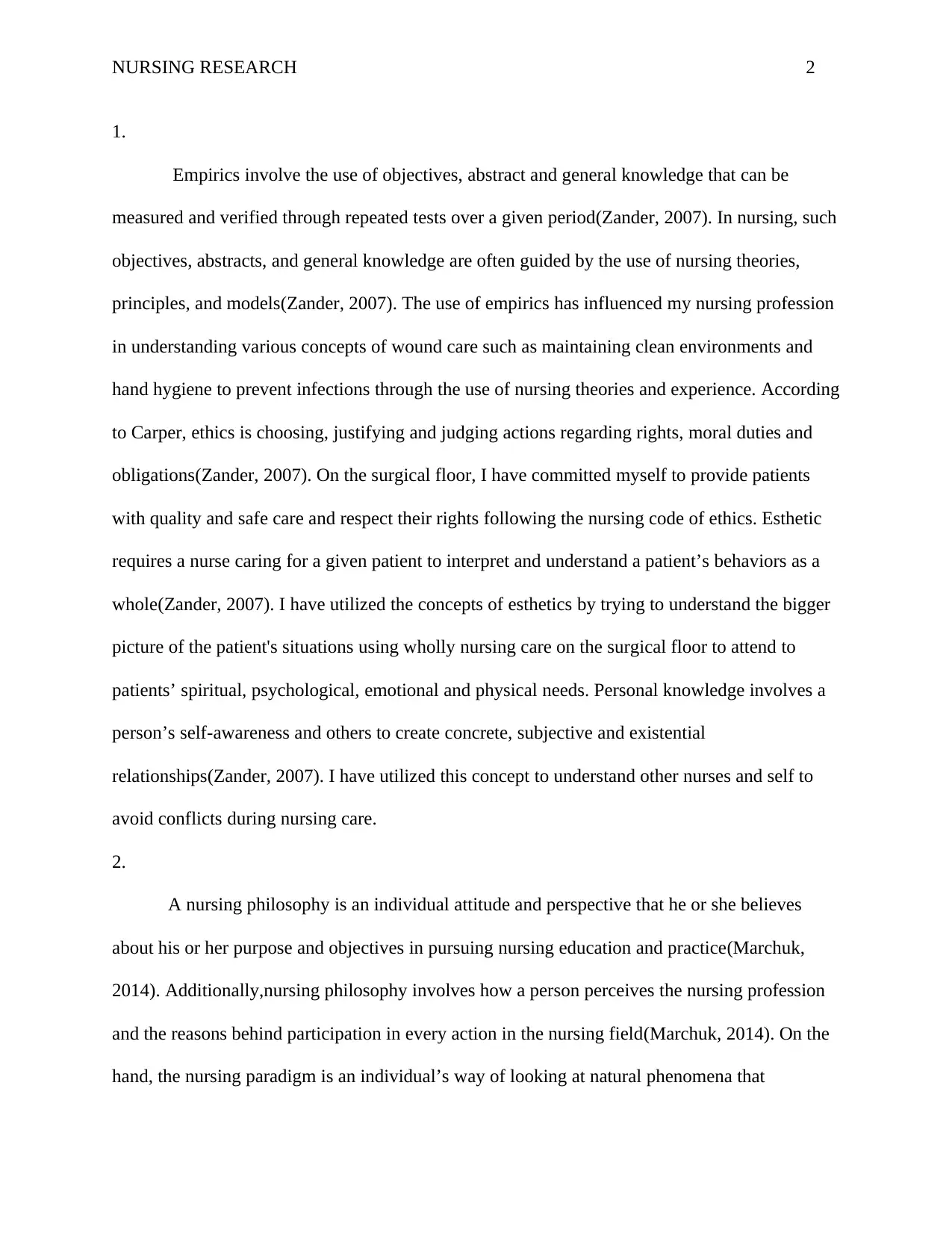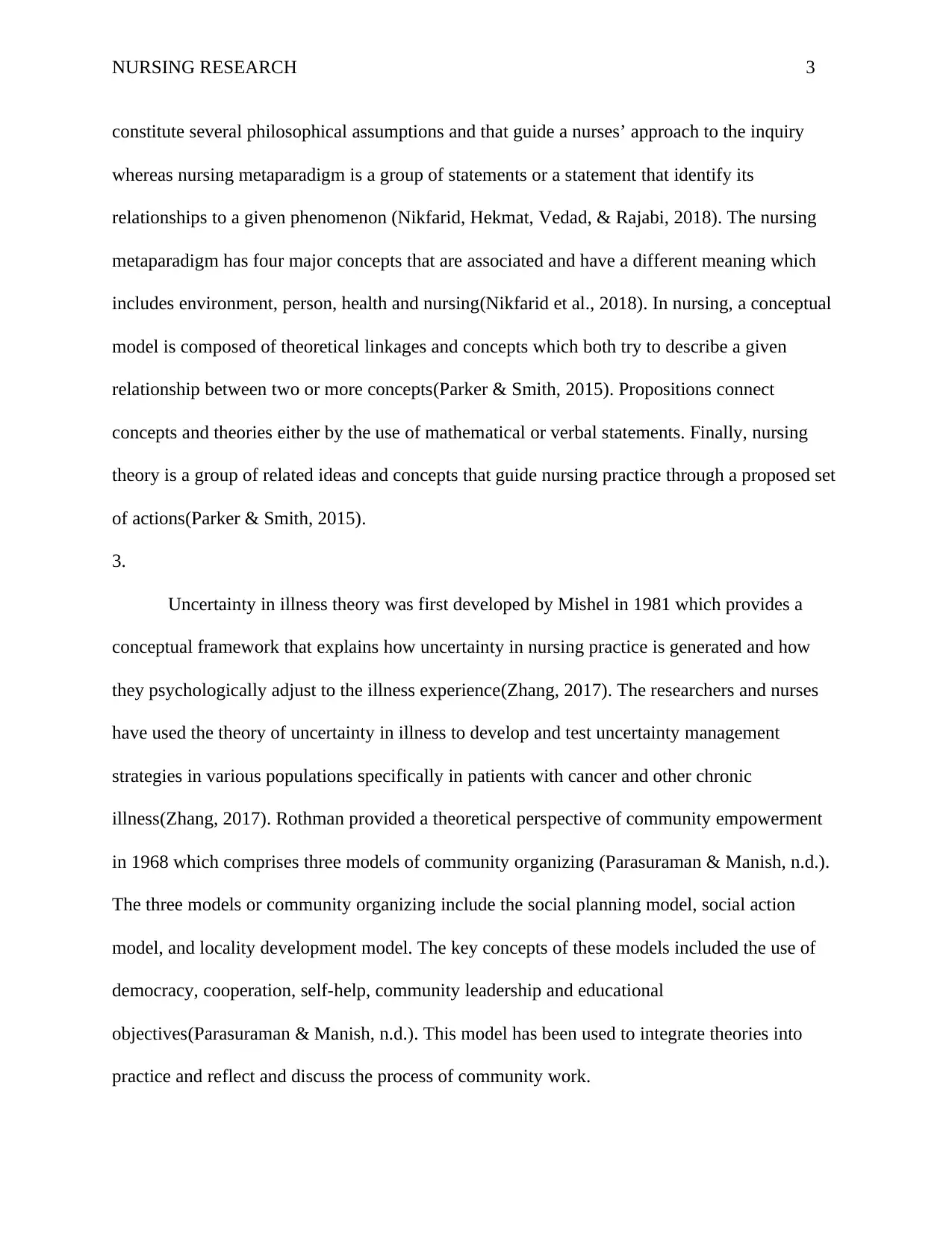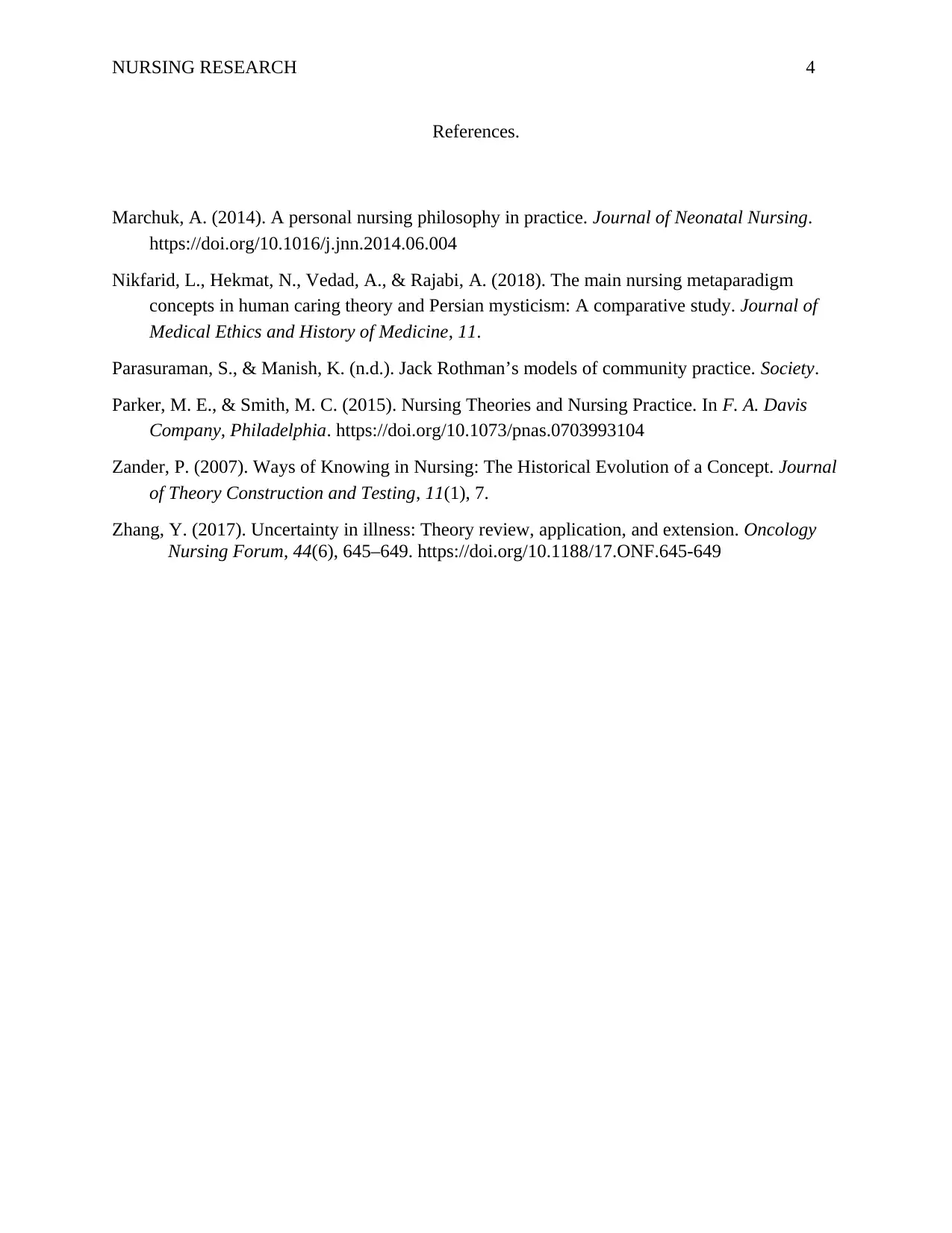Nursing Theories: Grand Theories and Community Empowerment
VerifiedAdded on 2022/08/23
|4
|875
|47
Essay
AI Summary
This essay examines nursing theories, focusing on Carper's patterns of nursing knowledge (empirics, ethics, esthetics, and personal) and their application in a registered nurse's work life on a medical-surgical floor. The author provides specific examples of how these patterns influence their practice, such as maintaining clean environments and respecting patient rights. The essay also discusses the role of nursing philosophy, paradigm, metaparadigm, conceptual models, and theories in guiding nursing practice. Furthermore, it explores the Uncertainty in Illness Theory and the Theory of Community Empowerment, including their authors, major concepts, and previous applications. The author references relevant literature to support their analysis, providing a comprehensive overview of nursing theories and their practical implications in healthcare.
1 out of 4





![[object Object]](/_next/static/media/star-bottom.7253800d.svg)